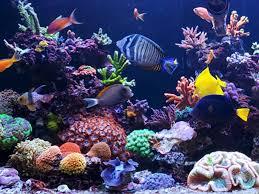Notifications

6 minutes, 18 seconds
-20 Views 0 Comments 0 Likes 0 Reviews

When setting up your fish tank, one essential component that often gets overlooked is the air pump for an aquarium. While filters and heaters usually take center stage, an air pump plays a crucial role in maintaining a healthy and oxygen-rich environment for your aquatic life. Whether you're a beginner or an experienced aquarist, understanding how and why to use an air pump can significantly improve the well-being of your fish.
In this blog, we’ll explore what an air pump does, the benefits of using an air pump for an aquarium, how to choose the right one, and how to install and maintain it properly.
An air pump for an aquarium is a device that pushes air into your tank through airline tubing, usually connected to an air stone, sponge filter, or decorative element. It doesn’t directly oxygenate the water, but it creates water movement and surface agitation, which increases gas exchange. This allows oxygen to enter the water and carbon dioxide to exit.
The result? Your fish can breathe easier, and your tank stays cleaner and healthier.
An air pump increases surface agitation, allowing more oxygen to dissolve into the water. This is especially important in warm tanks, where oxygen levels can drop quickly.
Many sponge filters and undergravel filters require an air pump to function. These are great low-cost filtration options, especially for breeding or quarantine tanks.
An air pump for an aquarium helps move water throughout the tank, preventing stagnation and ensuring even temperature distribution.
Air stones and bubbling decorations powered by an air pump can create a relaxing, beautiful underwater scene.
Certain fish and invertebrates, like bettas, goldfish, and shrimp, thrive in well-oxygenated environments. An air pump can make all the difference for them.
You might not always need one, but an air pump can be a game-changer in the following situations:
You have a densely stocked tank: More fish = more oxygen demand.
You’re using sponge filters: These require an air pump to operate.
You keep warm-water species: Warmer water holds less oxygen.
You want better water movement: Especially in corner areas or low-flow tanks.
You’re running a backup system: Air pumps can keep fish alive in power outages if connected to battery backup units.
When shopping for an air pump for an aquarium, consider the following factors:
Larger tanks need more powerful pumps. Always check the manufacturer's recommended tank size.
Some air pumps are quieter than others. If your tank is in a bedroom or office, opt for a silent or low-vibration model.
Want to run multiple air stones or filters? Choose a pump with multiple outlets or buy a splitter.
Reliable brands like Tetra, Fluval, and Eheim produce quality air pumps known for their longevity.
Position the pump outside the tank, preferably above the water level to prevent back-siphoning.
Attach airline tubing from the pump to your chosen accessory (air stone, sponge filter, etc.).
Install a check valve in the tubing to prevent water from flowing back into the pump.
Plug in and test the pump. You should see bubbles rising in your tank.
Adjust airflow with a valve or regulator if needed.
Check airline tubing for blockages or leaks every few weeks.
Clean or replace air stones as they can clog over time.
Keep the pump dust-free to avoid overheating.
Replace worn diaphragms in older models to maintain performance.
Adding an air pump for an aquarium is one of the simplest upgrades you can make for a healthier and more vibrant tank. It boosts oxygen levels, improves circulation, and supports filtration—all essential for the well-being of your aquatic pets.
Whether you’re setting up a small betta tank or a large community aquarium, an air pump is a valuable and affordable tool that enhances both function and beauty. So if you're considering whether to invest in an air pump for an aquarium, the answer is a bubbling "yes!"

